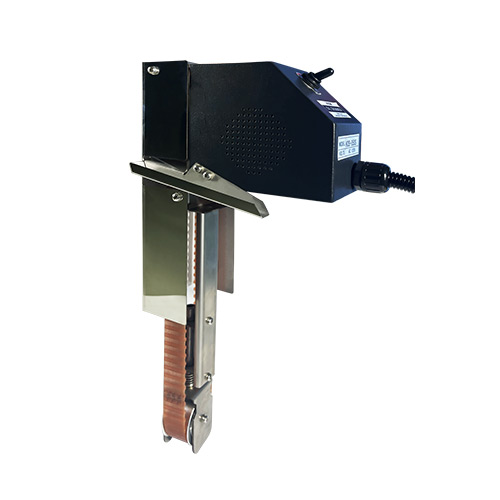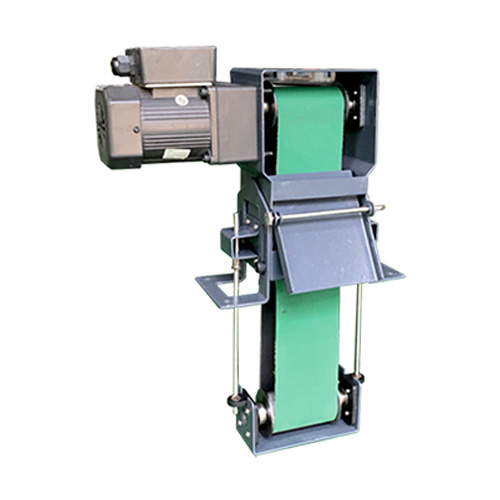-
WhatsAPP: +86 18706448138
-
Tengzhou, Shandong, China

Why Every Factory Needs an Oil Smoke Collector
This blog explores why every factory needs an oil smoke collector, delving into its benefits, applications, and key considerations.
Table of Contents
Introduction

In today’s industrial landscape, maintaining a clean and safe working environment is paramount. Factories, especially those utilizing CNC machines, face the challenge of managing oil smoke—a byproduct of machining processes that can harm both workers and equipment. Shansen, established in 2001 as a leading developer and manufacturer of CNC machine electrical components, recognizes the indispensable role of oil smoke collectors in ensuring operational efficiency and workplace safety. These devices capture harmful oil mist and smoke, protecting machinery, improving air quality, and ensuring compliance with environmental regulations. This blog explores why every factory needs an oil smoke collector, delving into its benefits, applications, and key considerations.
The Hidden Dangers of Oil Smoke in Factories
Oil smoke, generated during machining processes like cutting, grinding, or milling, consists of tiny oil droplets and particulate matter suspended in the air. Without an oil smoke collector, these particles can settle on equipment, leading to wear and tear, or be inhaled by workers, posing health risks such as respiratory issues. Factories without proper oil smoke management may also face regulatory penalties due to non-compliance with air quality standards. Shansen’s commitment to enhancing CNC machine performance underscores the importance of addressing these risks with effective solutions like oil mist collectors.
Health Risks Associated with Oil Smoke Exposure
Prolonged exposure to oil smoke can cause serious health concerns, including skin irritation, eye discomfort, and chronic respiratory conditions. Factories equipped with an oil mist collector significantly reduce these risks by filtering out harmful particles before they spread. This not only protects workers but also fosters a healthier workplace, reducing absenteeism and boosting productivity.
Impact on Machinery and Maintenance Costs
Oil smoke doesn’t just affect workers—it also damages machinery. When oil mist settles on CNC machines or other equipment, it can clog components, reduce precision, and increase maintenance costs. An oil smoke collector prevents this buildup, extending the lifespan of expensive machinery. Shansen, with its expertise in CNC machine components since 2001, advocates for oil mist collectors as a cost-effective way to protect investments in equipment.
How Oil Smoke Collectors Work


An oil smoke collector operates by drawing in contaminated air, filtering out oil mist and particulates, and releasing clean air back into the factory. These systems typically use a combination of filters, such as electrostatic precipitators or HEPA filters, to capture particles as small as 0.3 microns. By integrating an oil mist collector into a factory’s ventilation system, businesses can maintain a cleaner environment and ensure consistent machine performance.
Key Components of an Oil Smoke Collector
Most oil mist collectors include a fan to draw in air, a pre-filter to catch larger particles, and a main filter for finer oil mist. Some advanced models also feature monitoring systems to alert operators when filters need replacement. Shansen’s experience in manufacturing precision components ensures compatibility with such systems, making integration seamless for CNC-heavy factories.
Benefits of Installing an Oil Mist Collector
The advantages of using an oil smoke collector extend beyond health and equipment protection. These systems contribute to operational efficiency, environmental compliance, and cost savings. Below, we outline the key benefits that make oil mist collectors a must-have for modern factories.
Improved Air Quality and Worker Safety
By removing oil smoke from the air, these collectors create a safer and more comfortable working environment. Cleaner air reduces health risks and improves employee morale, which can lead to higher productivity. Shansen’s focus on worker-centric solutions aligns with the adoption of oil smoke collectors to prioritize safety.
Enhanced Equipment Longevity
An oil mist collector prevents oil mist from accumulating on machinery, reducing wear and tear. This translates to lower maintenance costs and fewer unexpected downtimes, allowing factories to maintain consistent production schedules.
Compliance with Environmental Regulations
Factories must adhere to strict environmental and workplace safety regulations. An oil smoke collector ensures compliance by reducing emissions and maintaining air quality standards, helping businesses avoid fines and reputational damage.
Key Applications of Oil Mist Collectors in Factories
Oil smoke collectors are versatile and can be used across various industries, particularly those involving CNC machining, metalworking, or automotive manufacturing. Shansen, a pioneer in CNC machine electrical components, has seen firsthand how oil mist collectors benefit factories producing precision parts. These systems are critical in environments where oil-based lubricants or coolants are used, as they effectively manage the resulting oil mist.
Industries That Benefit Most
Industries such as aerospace, automotive, and general manufacturing rely heavily on CNC machines, making oil mist collectors essential. These systems are also valuable in factories producing medical devices or electronics, where precision and cleanliness are non-negotiable.
Choosing the Right Oil Smoke Collector for Your Factory
Selecting the appropriate oil smoke collector depends on factors like factory size, machining processes, and production volume. Shansen advises factories to consider the following when choosing a system:
| Factor | Consideration |
|---|---|
| Factory Size | Larger facilities may require centralized systems, while smaller ones need compact units. |
| Type of Machining | High-speed CNC machines generate more oil smoke, requiring robust filtration. |
| Filter Type | HEPA or electrostatic filters offer different levels of efficiency and maintenance. |
| Airflow Capacity | Ensure the collector can handle the volume of air in your workspace. |
| Maintenance Requirements | Choose systems with easy-to-replace filters to minimize downtime. |
This table highlights key considerations to ensure the oil smoke collector meets your factory’s specific needs, aligning with Shansen’s expertise in optimizing CNC operations.
Installation and Maintenance of Oil Smoke Collectors
Proper installation and maintenance are critical to maximizing the effectiveness of an oil mist collector. Systems should be installed by professionals to ensure optimal airflow and filtration. Regular maintenance, such as filter replacement and system cleaning, ensures consistent performance. Shansen recommends partnering with reliable suppliers who offer support for oil mist collector upkeep, ensuring long-term efficiency.
Tips for Effective Maintenance
To keep an oil smoke collector running smoothly, schedule regular filter checks and cleanings. Monitoring systems can alert operators to potential issues, preventing costly repairs. Factories should also train staff on basic maintenance to minimize downtime.
Cost-Benefit Analysis of Oil Mist Collectors
While the initial investment in an oil mist collector may seem significant, the long-term savings outweigh the costs. Reduced maintenance expenses, fewer health-related absences, and compliance with regulations contribute to a strong return on investment. Shansen’s experience in cost-effective CNC solutions highlights the value of integrating oil mist collectors to enhance operational efficiency.
Long-Term Savings
By protecting equipment and reducing health risks, oil smoke collectors lower operational costs over time. Factories can allocate savings to other areas, such as upgrading machinery or expanding production.
Environmental Impact of Oil Smoke Collectors

Sustainability is a growing concern for modern factories. Oil smoke collectors reduce emissions, contributing to a greener operation. By capturing oil mist before it escapes into the atmosphere, these systems help factories meet environmental standards and reduce their carbon footprint. Shansen’s commitment to innovation includes supporting eco-friendly solutions like oil smoke collectors.
Conclusion
Oil smoke collectors are no longer optional—they are essential for factories aiming to protect workers, equipment, and the environment. From improving air quality to ensuring regulatory compliance, these systems deliver measurable benefits that enhance operational efficiency. Shansen, with over two decades of expertise in CNC machine components, encourages factories to adopt oil smoke collectors to optimize their operations. Contact us today to explore how an oil smoke collector can transform your factory into a safer, more productive environment.
FAQ
What is an oil smoke collector?
An oil smoke collector is a filtration system designed to capture oil mist and smoke generated during machining processes, improving air quality and protecting equipment.
Are oil smoke collectors suitable for small factories?
Yes, compact oil smoke collectors are available for smaller facilities, offering the same benefits as larger systems but tailored to limited spaces.
Can oil smoke collectors reduce maintenance costs?
Absolutely. By preventing oil mist buildup on machinery, these systems reduce wear and tear, lowering maintenance expenses over time.


